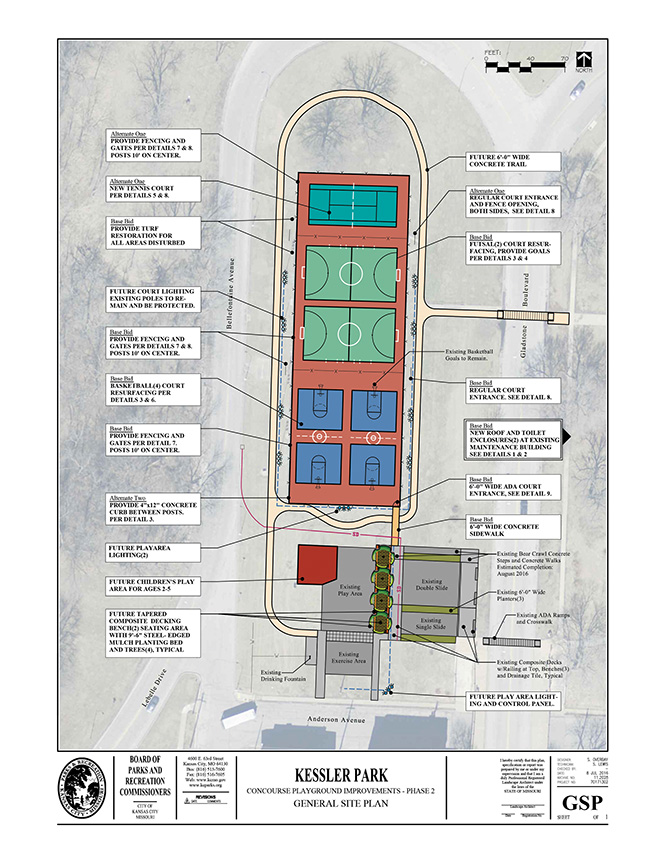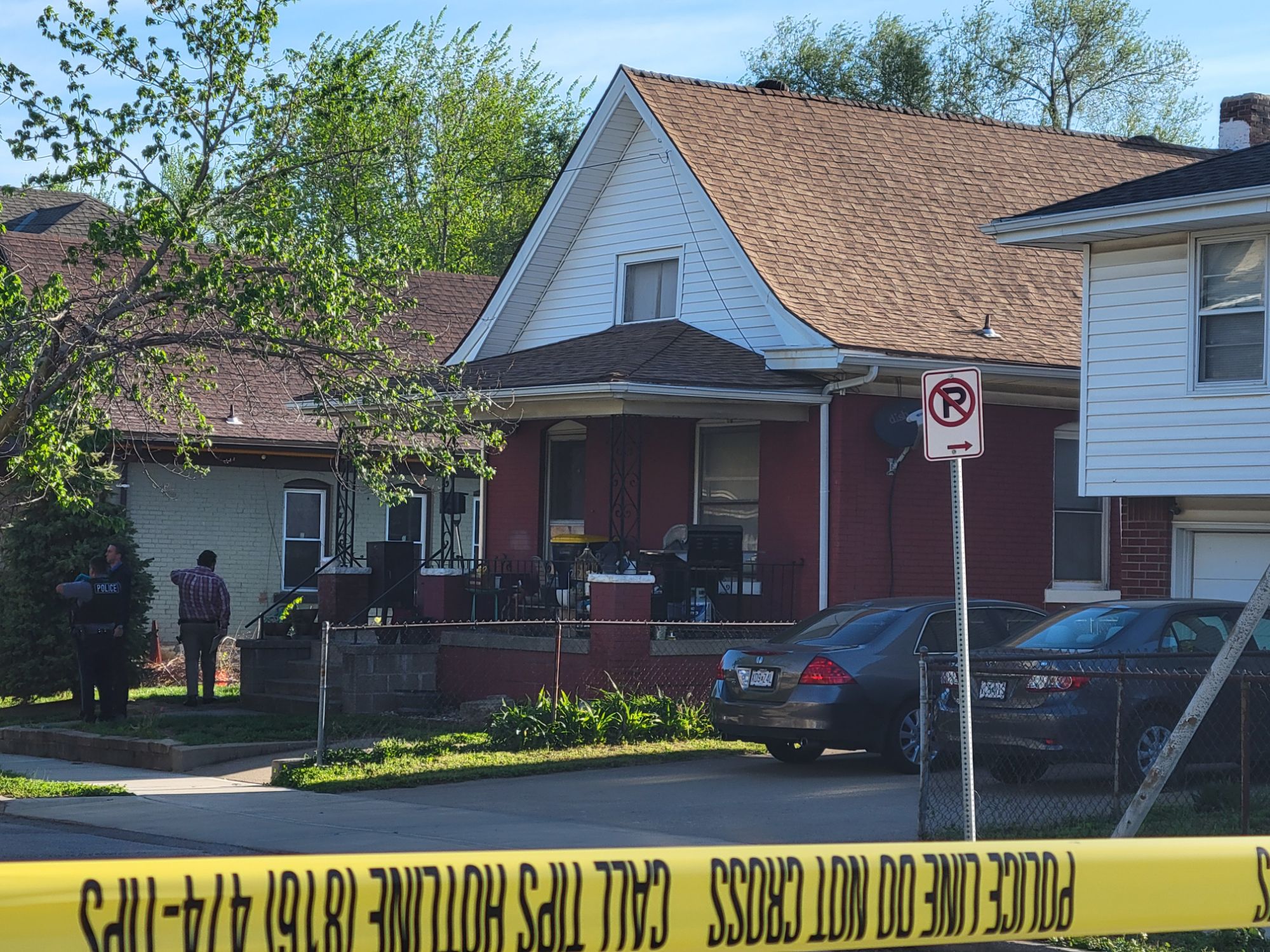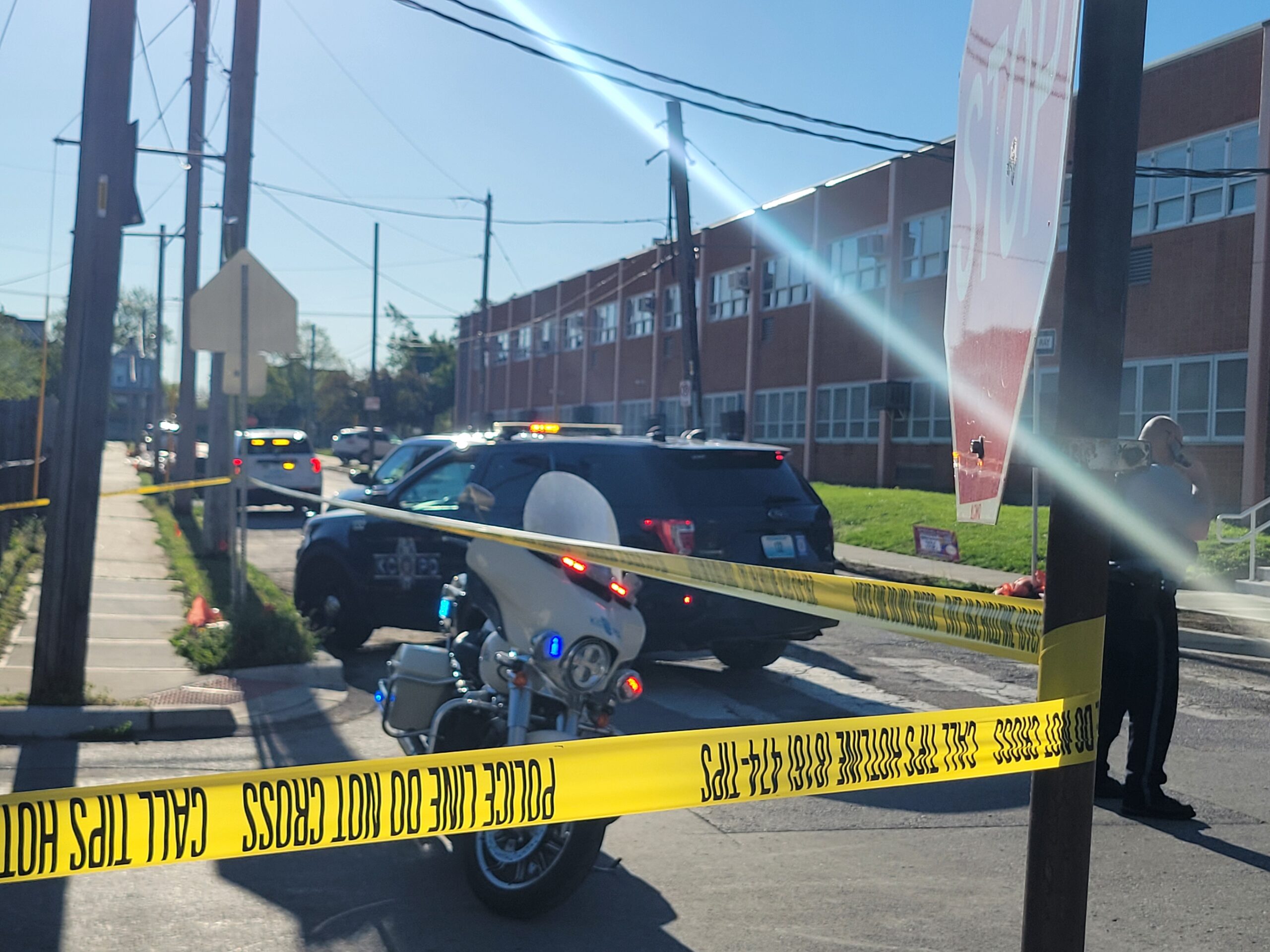
Michael Bushnell
Publisher
Roughly a dozen Scarritt Renaissance neighbors met with representatives of the city’s Parks and Recreation Department on the afternoon of Monday, July 13, under the historic Colonnade in Concourse Park to discuss how the 112-year-old historic landmark can be restored and brought back as an integral part of a larger park plan.
However, getting that process under way and funded to the tune of roughly $600,000 may be a tougher nut to crack given the hit the city has taken in tax revenue during the COVID-19 pandemic.
The Colonnade was completed in 1908 as a link between Cliff Drive below, Concourse Park and the mansions of Gladstone and Benton Boulevards above as part of George Kessler’s comprehensive parks and boulevards plan that was introduced during the City Beautiful movement that was popular during the early 1900s.
In recent years the majestic monument that offers sweeping vistas of the Missouri River Valley below has slowly fallen into disrepair. This year, the Historic Kansas City Foundation listed the Colonnade as one of its 100 most endangered structures in the city, spurring action by neighborhood residents.
An eight page independent engineering study prepared by Skeens Consulting Service in Lake Winnebago, MO in August, 2019, spotlighted over twenty key areas of the Colonnade that would require immediate attention in order for the structure to maintain its structural and historical integrity, among them the caulking of joints between the cut limestone sills and repair and replacement of the clay roof tiles that cover the domed rotundas.
Scarritt Renaissance Neighborhood Vice President Leslie Caplan presented the engineering plan, pointing out areas inside the Colonnade that drastically needed attention.
“The garden needs weeding, there are areas where the asphalt is pitted and missing and the eternal flame isn’t so eternal anymore,” Caplan said. “The hope is to identify enough funding sources to complete the project over the next two or three year city budget cycle through PIAC grants and a hope for some matching private or public funds at the state level.”
Fierce competition for a piece of a smaller PIAC pie could mean the project is held up for lack of funding. Additionally, debt service has begun on the city’s GO Bond funds meaning a smaller pie exists for city funded infrastructure projects, some that have been in cue since the Bonds were approved in the April, 2017 municipal election.
“Splitting up the project over a couple of city budget cycles may be the key to getting funded through PIAC or GO Bond funding,” said Scott Wagner, Director of NEAT and an eight-year City Council veteran.
However, lack of funding is not deterring progress on the project. The planning process is continuing and funding sources are being identified. The city’s Parks and Recreation department is reviewing the engineering study to ensure the $600,000 figure is as accurate as possible and PIAC grant requests are being prepared in order to meet the August 31 deadline for funding in the city’s fiscal 2021-2022 budget year.
As those plans gel and funding is secured, we’ll have the details here. The engineering study and 2016 Concourse Master Plan can be found at
northeastnews.net.


















